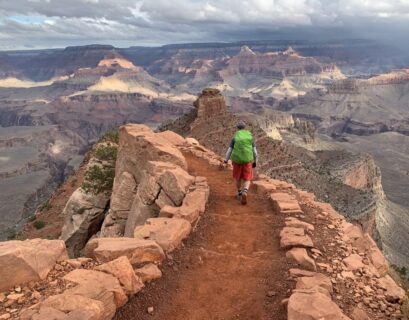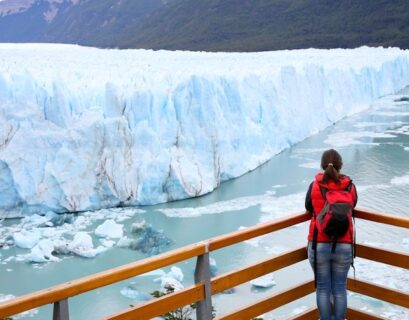Nestled in the heart of the Rocky Mountains, Yellowstone National Park stands as a testament to the untamed beauty of the American wilderness. Established in 1872, it holds the distinction of being the first national park in the world, and to this day, it remains an iconic destination that draws nature enthusiasts, wildlife lovers, and adventure seekers alike. In this review, we explore the awe-inspiring landscapes, unique geological features, and diverse wildlife that make Yellowstone a must-visit destination for those seeking a profound connection with nature.
Geothermal Marvels:
Yellowstone is renowned for its geothermal wonders, and no visit is complete without witnessing the iconic Old Faithful geyser. Erupting approximately every 90 minutes, Old Faithful captivates onlookers with its powerful bursts of steam and water, reaching heights of up to 184 feet. The surrounding Upper Geyser Basin, home to a myriad of geysers and hot springs, provides a surreal landscape of colorful pools and otherworldly features.
The Grand Prismatic Spring, located in the Midway Geyser Basin, is another highlight. Its vibrant hues, ranging from deep blues to fiery reds and oranges, create a mesmerizing spectacle. Elevated boardwalks allow visitors to observe the thermal features while minimizing their impact on the delicate ecosystem.
Wildlife Encounters:
Yellowstone is a haven for wildlife, providing sanctuary to a diverse range of species. The park is home to the iconic American bison, the symbol of the American West. Witnessing a herd of bison roaming freely across the grassy plains is a humbling experience that transports visitors back to a time when these majestic creatures roamed the continent in abundance.
Other wildlife sightings include elk, pronghorn, mule deer, and the elusive gray wolf. Lamar Valley, often referred to as the “Serengeti of North America,” offers prime opportunities for wildlife viewing. Grizzly bears and black bears roam the park, showcasing the untamed nature of Yellowstone’s wilderness.
Grand Canyon of the Yellowstone:
Carved by the Yellowstone River, the Grand Canyon of the Yellowstone is a geological marvel that captivates with its towering waterfalls and colorful canyon walls. Artist Point provides a panoramic view of the Lower Falls, where the river cascades over the brink, creating a thunderous display. Hiking trails along the rim offer opportunities to marvel at the canyon’s intricate details and ever-changing colors.
Mammoth Hot Springs:
Located in the northern part of the park, Mammoth Hot Springs is a captivating area where mineral-laden waters create terraces of travertine. The vibrant terraces, formed by the deposition of calcium carbonate, showcase an otherworldly landscape. The Main Terrace, Minerva Terrace, and Canary Spring are among the notable features, offering visitors a glimpse into the geological forces that shape Yellowstone’s ever-evolving scenery.
Tower Fall and Tower-Roosevelt Area:
Nestled in the northeastern part of the park, Tower Fall is a 132-foot waterfall that plunges into the Yellowstone River. The surrounding Tower-Roosevelt area provides a quieter and less crowded experience, allowing visitors to appreciate the tranquility of the wilderness. Hiking trails offer opportunities to explore the diverse landscapes and encounter the park’s wildlife in a more secluded setting.
Hayden Valley:
Hayden Valley, situated between Yellowstone Lake and the Yellowstone River, is a wildlife-rich area known for its expansive meadows and prime grazing habitat. Bison, elk, and grizzly bears are often spotted in this picturesque valley. The scenic drive through Hayden Valley provides ample opportunities for wildlife viewing, and the wide-open spaces allow for the appreciation of Yellowstone’s natural splendor.
Yellowstone Lake:
As one of the largest high-elevation lakes in North America, Yellowstone Lake is a serene and captivating destination within the park. The lake’s pristine waters are surrounded by snow-capped peaks and lush forests, creating a tranquil setting for various recreational activities. Fishing, boating, and lakeside picnics are popular ways to appreciate the beauty of Yellowstone Lake.
Sustainability and Conservation:
Yellowstone National Park is committed to environmental stewardship and conservation efforts. Park rangers and staff work tirelessly to protect the delicate ecosystems, educate visitors about Leave No Trace principles, and manage the delicate balance between preserving the natural environment and providing access for visitors. Sustainable practices, such as waste reduction and wildlife protection initiatives, contribute to the long-term health of Yellowstone’s ecosystems.
Accessibility and Visitor Services:
Yellowstone offers a range of services to enhance the visitor experience while maintaining the park’s natural integrity. Visitor centers provide information, educational exhibits, and ranger-led programs to help visitors connect with the park’s natural and cultural heritage. The park’s well-maintained roads and trails make it accessible for a variety of outdoor activities, from scenic drives to backcountry backpacking.
Conclusion:
Yellowstone National Park, with its geothermal wonders, diverse wildlife, and breathtaking landscapes, is a testament to the unbridled beauty of the American wilderness. Whether standing in awe of Old Faithful’s eruptions, observing bison roaming across the plains, or marveling at the colors of the Grand Canyon of the Yellowstone, every moment in Yellowstone is an encounter with the forces of nature in their purest form.
The park’s commitment to conservation ensures that future generations can continue to experience the magic of Yellowstone. It is a place where time seems to stand still, and the wild spirit of the American West is preserved in all its glory. Yellowstone National Park invites all who venture within its borders to witness the wonders of nature, fostering a deep appreciation for the natural world and the importance of preserving these pristine landscapes for generations to come.









